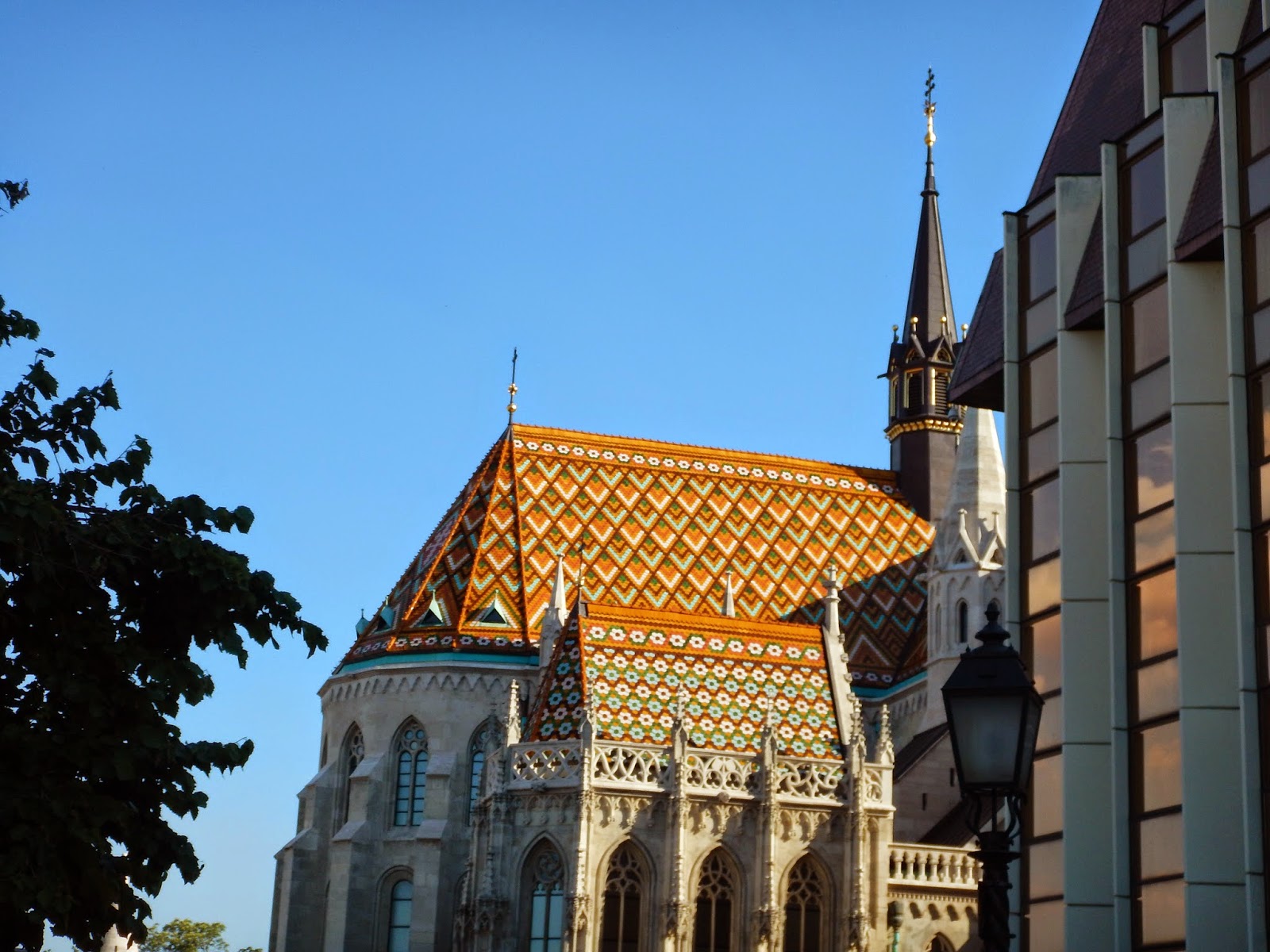Another suggestion from my graduate student (her parents live in Budapest so she was a font of knowledge about it) was to try one of the thermal baths. Budapest is known as the city of healing waters because there are so many natural steam baths and thermal pools. There are baths in Budapest that date from the 16th century (think of Turkish baths as this period was when Hungary was occupied by the Ottomans) - specifically the Kiraly, Rudas, and Veli Bej baths. And then are a couple that were built at the beginning of the 20th century - but still within the architectural style of the more ancient baths.
We looked at a map and decided to find one on the Buda side and also one that we could walk to. At the bottom of the Castle hill was the Gellert Baths. It looked like it was within walking distance and all down-hill. Easy (or so we thought). What we hadn't taken into consideration was that most of the downhill was on cobblestone and, once on level ground, we would be walking along the tram-line. Nor had we considered that it was about 32 degrees celsius. We donned our sun screen and hats and started off. It was only about 5-7 kilometres but by the time we got to the baths I was stumbling and reeling from the heat. I also had a nice assortment of instant blisters, also due to the heat.
But the baths were, indeed, healing. My feet felt better instantly and so did every other aching muscle in my body. We stayed in a middle temperature pool, not feeling up to the hotter pools after our walk. The architecture of the building was amazing. Some senior people, obviously regulars, slept in the corners of the pool, their heads barely bobbing above the surface. A lovely, meditative way to spend an afternoon in healing waters.
When we left, we decided we couldn't deal with the hike back, especially as it was up steep hills, so we called a taxi. As it was his area he asked how we had gotten to the Baths as he didn't remember picking us up. We told him we had walked and he was appalled. "We don't do that here," he stated gesticulating about the heat and distance. What shouted even more loudly was what he didn't say but was undoubtedly thinking: "Tourists!"
That evening, our last evening, we dined at the Cafe Pierrot. The restaurant is built in a 13th-century bakery, with stone ovens still in place. We dined outside in their gardens at the foot of 13th-century walls.
Goodbye Budapest, goodbye Europe! We WILL be returning, definitely to Prague and to Budapest but we are mulling about other trips as well. Right now, high on our list - a cycling trip to either Italy or the Cotswolds in England.
THE END



























































